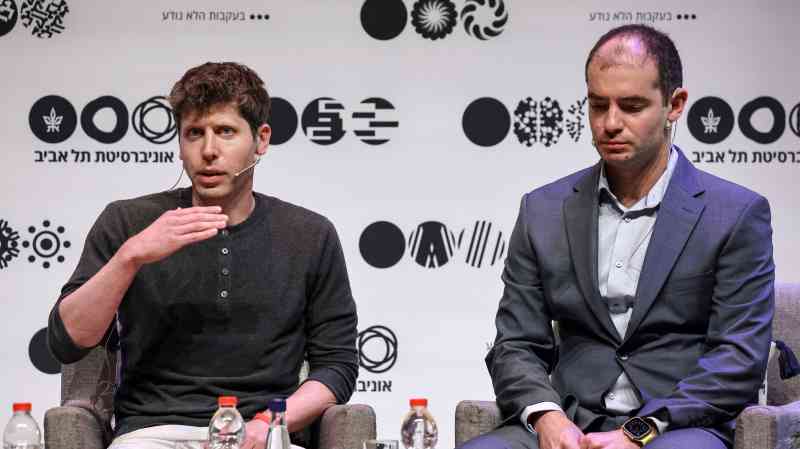AI discovers new drugs that could save millions of lives — and Big Pharma’s time
While many of GSK’s legions of scientists start their day by donning lab coats and safety goggles, Patrick Schwab opts for a T-shirt and chunky headphones.
As the pharmaceuticals giant’s director of machine learning and artificial intelligence, Schwab looks more like a video gamer than a scientist. Most of his days are spent in front of his computer, working from his home in Zurich.
A computer scientist by training, he could be selling his programming talents to the tech giants of Silicon Valley, but instead he is building AI algorithms that could create cures saving millions of people from succumbing to fatal diseases.
“You don’t get that sense of [fulfilment] if you go to Google or Facebook to work on advertising optimisation,” said Schwab. “You might be working on exciting intellectual problems — but you’re definitely not improving people’s lives to the same degree.”
While many industries are starting to have second thoughts about how quickly AI will transform the way they operate, in the world of drug development the changes are already proving revolutionary.
Last month, GSK presented Schwab’s latest project to the Alzheimer’s Association’s international conference in Philadelphia. His team’s findings showed that Shingrix, its blockbuster shingles vaccine, was also associated with a 24 per cent decrease in dementia risks. Several weeks earlier, a separate study from the University of Oxford demonstrated a similar correlation.
For 40 years, a small group of scientists had suspected that Alzheimer’s could be triggered by a herpes virus similar to that which causes shingles. The theory was, they figured, that those who had been inoculated against shingles may also be protected from Alzheimer’s.
The trouble was, they did not have enough evidence to justify the hundreds of millions of pounds required to carry out the tests and clinical trials that might prove their theory. However, by applying AI technology to a database of 100 million people’s anonymised health records, Schwab was able to compare the Alzheimer’s histories of people who had received Shingrix with those who had not.
To ensure the results were not skewed by other factors such as age, weight and mental health, he set the algorithm to adjust for nearly 400 such variables. “This is uniquely possible because we used machine learning,” Schwab explained. “With 100 million people’s records, we’re talking about terabytes of data.”
The study took only days to complete and concluded that, on average, for those aged over 50, the Shingrix vaccination reduced the chances of developing Alzheimer’s by 27 per cent over three years when compared with a cohort that had been given an earlier vaccine which had been associated with delayed onset of the disease.
Of course, the study was only a statistical analysis. It would probably take years of trials on volunteers for Shingrix to be prescribed as an Alzheimer’s vaccine, but GSK now has a clear indication that it is worth investing in when it decides where to deploy its research and development billions.
It does not stop with Shingrix. With AI programs able to sift through mountains of data at pace, scientists are also researching why diabetes medication, for example, can reduce the risk of Parkinson’s and other degenerative diseases.
It can also be used to find new applications for cures that appear to be doomed. For nearly a decade, GSK had been working on a drug to try to control type 2 diabetes by inhibiting the function of a protein called IL-18. The project preceded Robert Scott, GSK’s head of genetics and genomics, but he adopted it and was soon leading the research. However, the clinical trials were a flop. It was a tough moment for the team, Scott recalled: “We take trial failures really hard because we all want to be working on things that are going to transform people’s lives.”
But then Scott, a genetic biologist, asked for a computational analysis to be carried out to find out what ailments might be best served by the cure. By studying millions of pieces of data, the AI noted that, like diabetes patients, eczema sufferers also generally had higher levels of IL-18. Rather than ditching the treatment, Scott and his team started a new clinical process, which is currently in phase 2 trials.
“I can’t describe to you how brilliant it is to spend years doing something that now looks like it has promise,” Scott said.
At AstraZeneca, GSK’s big rival, Jim Weatherall is the vice-president of data science and AI. He said that AI makes it more likely that the bets AstraZeneca places on potential cures carry less risk. He added: “We end up doing fewer clinical trials with a greater probability of success.”
In December, AstraZeneca signed a deal with Absci, a US AI research company whose technology observes the interactions between proteins in diseased cells. Its technology mimics them and designs proteins that destroy the molecules that cause the disease. The deal involves a £190 million upfront payment to Absci and will also see AstraZeneca provide funding for research. Absci will also be entitled to royalties for sales of any cures it hatches.
In 2019, AstraZeneca launched a collaboration with Benevolent AI, a British tech firm that uses its AI platform to speed up drug discovery. The drugs company tasked Benevolent to find different “target” molecules in the body that might combat chronic kidney diseases and idiopathic pulmonary fibrosis, a lung disease. Benevolent made some promising finds, which AstraZeneca is researching further. In 2022, it asked Benevolent to find targets for lupus and heart failure.
Dr Joerg Moeller, the chief executive of Benevolent AI, who trained as a doctor, said that he is pleased with the progress being made on AI-enabled drug discovery, but added that there was still more work to do. He said: “It takes more than ten years to bring a new drug to patients, at the average cost of $2.6 billion, and 90 per cent of these efforts still fail. The big promise of AI is to foundationally change that — and that is what attracted me to Benevolent.”
Its effects may be profound, but it also makes Schwab’s nine to five more enjoyable. “This opens up new avenues, new ways of addressing problems that just were not present before. This is obviously incredibly exciting — and incredibly fun.”




Post Comment